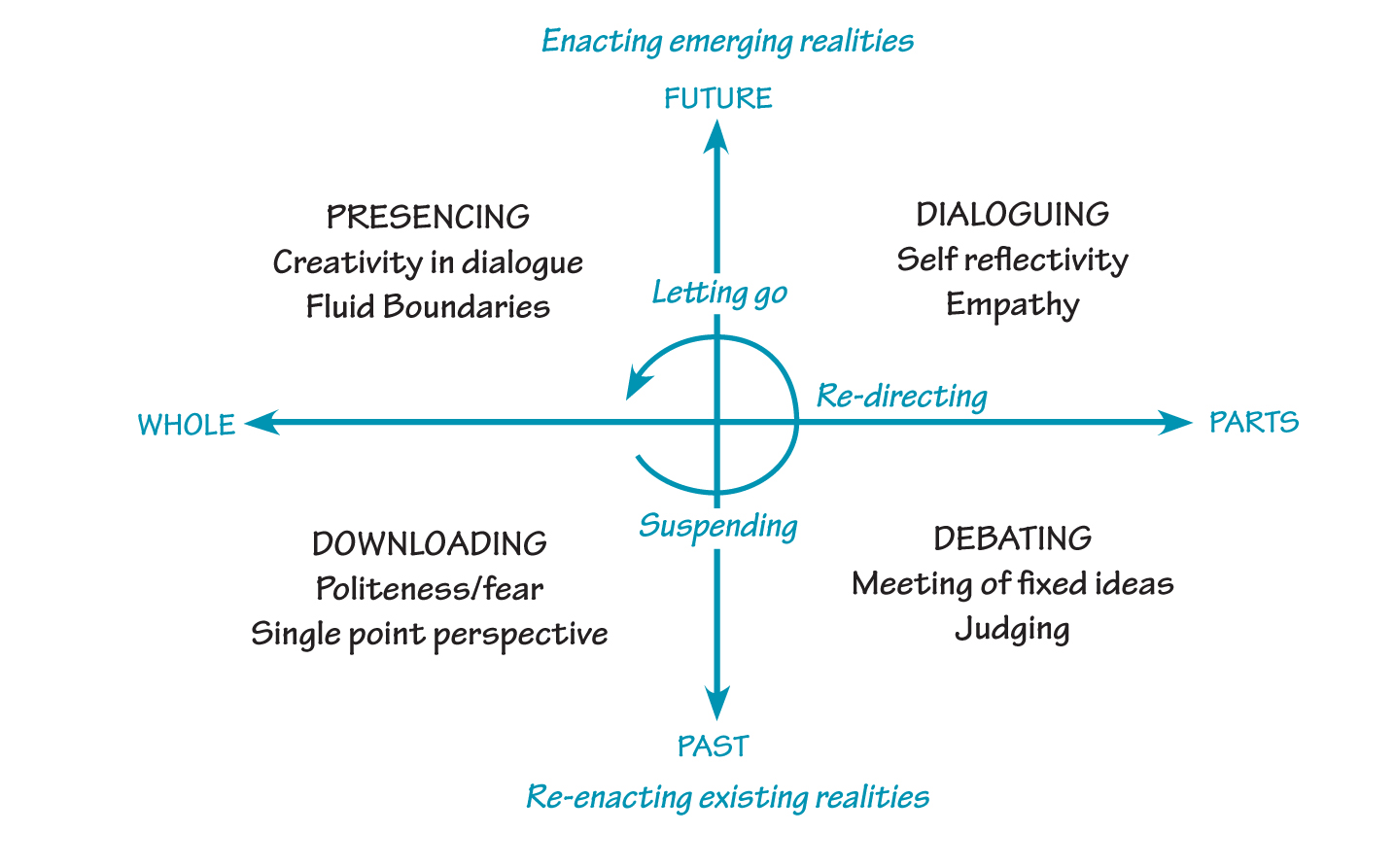How many times do we walk into a workshop and find ourselves wondering whether or not we really want to be there, questioning whether the session will be a good use of our time and/or money, or thinking about how much we’ve been looking forward to it and waiting for it to finally start? Then once it begins, we trudge through the standard introductions and go through an overview of the course material. What a slow way to start a session.
“Cynics & Believers” is an active and invigorating way to engage participants in a program by having them assume different roles. Using this module at the beginning of a workshop or project quickly accomplishes several things. It gives group members the opportunity to:
- share their “true feelings”—positive and negative—about the workshop, in a low risk way
- hear their collective hopes and concerns
- get their voices into the room early
- viscerally experience different types of talking and listening
- energize themselves
By assuming the roles of cynics and believers, participants find it easy to share what is really on their minds—and even express the most extreme versions of those thoughts. Engaging in a fast-paced debate gets attendees on their feet, “mano a mano,” talking with each other, but doing very little listening. In a short time, the exercise generates rich material for a content and process debrief.
To try this exercise at the start of your next workshop:
Timing:10–15 minutes
Number of Participants:8 or more
Purpose/DescriptionWe often start workshops by trying to determine the participants’ hopes and concerns. This quick exercise helps us do this by having group members assume the roles of “cynic” and “believer,” enabling them to say what they might ordinarily censor if they had to speak for themselves. This process gets people up and moving in an energized conversation that sets a positive tone at the start. It also provides an example of “downloading” and “debating” communication styles that can be referred to later on in the workshop or project (see “Four Ways of Talking and Listening”).
General Notes, “Popcorn style” refers to the idea that people speak when they are ready (when you are hot, you pop) in a random order (not everyone necessarily has to speak), as opposed to having each person participate in a predefined sequence.
FOUR WAYS OF TALKING AND LISTENING

1. Divide the group in half by splitting it equally down the middle. (Don’t have people count off.)
2. Turn to one group and explain that regardless of their actual feelings about this workshop or project (which they don’t actually need to declare), they are to take the role of “believers” and argue the point of view that this workshop or project is the best possible thing to do—it is the “best thing since sliced bread.”
3. Tell the other group that they are to play the role of “cynics.” They should argue that this workshop or project is a waste of time—a ridiculous idea.
4. Ask people to stand up and pair up—one believer with one cynic. Give them five minutes to debate the issue, each trying to convince the other of their position using their various powers of persuasion and multiple arguments of their own creation.
5. After the allotted time, have group members return to their seats.
6. Debrief the process.
- Ask the believers to report out popcorn style the things that their cynical partners said that they had to admit made sense. Record these comments on a flipchart headed “Cynics.”
- Do the same for the cynics—ask them what things the believers said that made sense to them. Record these comments on a flipchart headed “Believers.”
As you record the comments, try to distill them to their “hope or fear” component. What are those concerns that the group may be holding? What are those things that the participants want to get out of the workshop/ project? Work to get the “undiscussables” out on the table. Once you have recorded the opinions, acknowledge that we all have different reasons for being here, and we expect that the session will meet people where they are and support them in their personal journeys.
7. Finally, debrief the way the exchanges took place—through “downloading” and “debating.” In downloading, people don’t actually listen to what is being said by their “opponents”; they are merely taking the time to re-arm themselves for their next volley. Downloading is all about reconfirming what is already known. In debating, people try to listen fairly and may even notice disconfirming ideas and data. They still want to “convert” the listener to the speaker’s way of seeing things. Neither of these ways of conversing will amount to much. Tell people that, in the rest of the workshop/ project, as a group you will endeavor to practice talking and listening from a more generative and empathetic stance, leaving the downloading and debating behind.
